Since this article is a spiritual successor of the last Cyberpunk memory test, the same game title must not be missing today. As usual, we use a 60-second drive-and-run course around the “Kabuki Market” that allows us to sample the effects of various CPU, RAM, and GPU configurations on the gaming experience. The data was recorded and measured with the Nvidia Frameview tool, based on the open-source software PresentMon.
A brief overview of the abbreviations used in graphics for clarity follows:
- 2x1R: Two DIMMs with one rank each
- 4x1R: Four DIMMs with one rank each
- 2x2R: Two DIMMs with two ranks each
- 4x2R: Four DIMMs with two ranks each
- 3800: DDR4-3800 clock rate with 1900 MHz real clock and 3800 MT/s
- CL16: Column Address Strobe latency with 16 ticks
Of course I don’t want to withhold the test system specs from you. All benchmarks from this article, including those on the previous page, were performed with the following hardware:
| Test system | |
|---|---|
| Hardware: |
AMD platform: Superflower Leadex Gold 1600W power supply Windows 10 Pro 64-bit (2004) operating system |
| Cooling: |
TechN CPU Waterblock AMD AM4 CPU block |
| Housing: |
Open Benchtable |
| Periphery: |
Benq XL2720 Monitor |
The timings used are based on manual primary timings, tRC and tRFC and auto secondary and tertiary timings of the quad-rank configuration and were pinned to these values with manual settings to achieve consistency between different kits and configurations. It is also important to know that different RAM modules, as long as they are operated with the same clock rate and exactly the same timings, achieve the same performance. The type of memory chips used is therefore of secondary importance for such comparisons, as long as all configurations are operated with exactly the same timings. The following timings were used for all configurations:
Now that we’ve covered testing hardware and methodology, we can turn our attention to performance in Cyberpunk 2077. Even if it’s just a single game title, the effects of different memory configurations are comparable for similarly demanding titles. The tests were done with the preset “Raytracing Ultra” and the patch 1.06 without any config modifications outside the game UI. Also, 1440p is back as a resolution as requested, lining up between 1080p and 2160p.
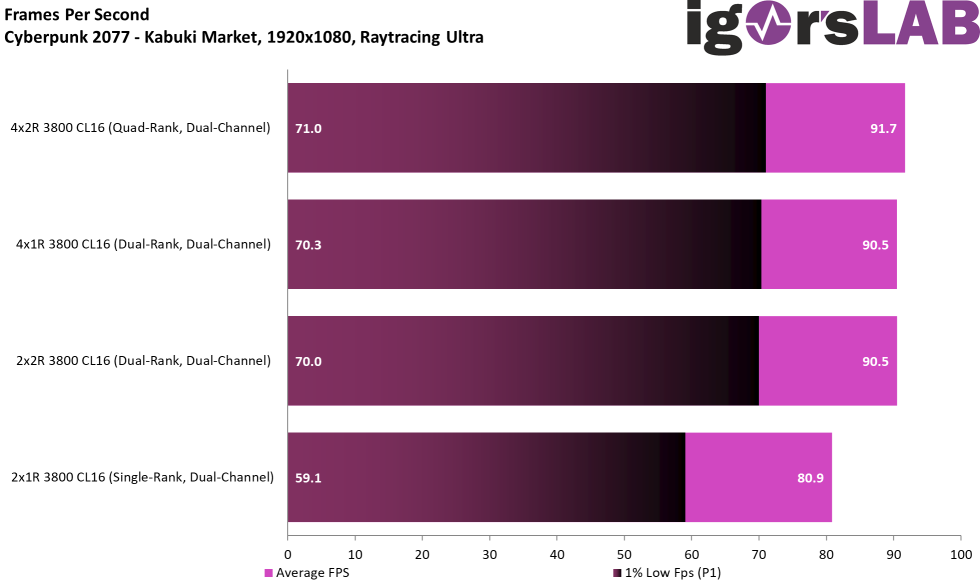
As expected from our findings in the first Cyberpunk Memory Test, we see a big difference between single-ranked and dual-ranked at 1080p, about 11% in average FPS and almost 16% in 1% low FPS. Furthermore, we can see that both dual-rank configurations are almost perfectly equal, whether consisting of 4 sinlge-ranked and 2 dual-ranked DIMMs. The quad-rank config leads reproducibly, but here the difference is just about 1% to dual-rank.
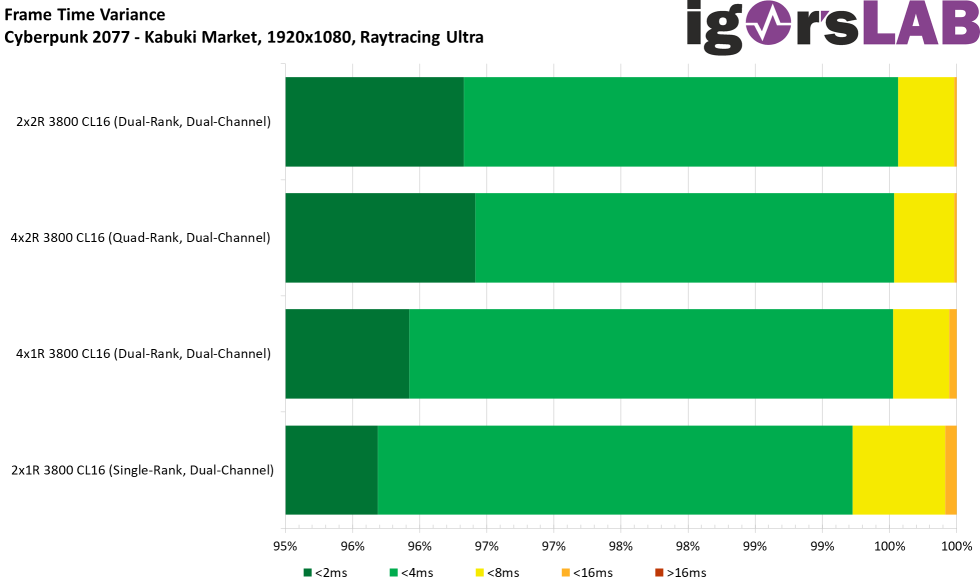
For the frame time variance, we can only see a clear disadvantage with the single-rank config, recognizable by more frame times greater than 4 ms, shown here in yellow or orange. The three other configs keep the balance here in the range of the measurement tolerance. Even though supposed differences in frame times greater and smaller than 2 ms are visible in the graphic, marked in dark and light green, this is only the run-to-run variance of our benchmark.
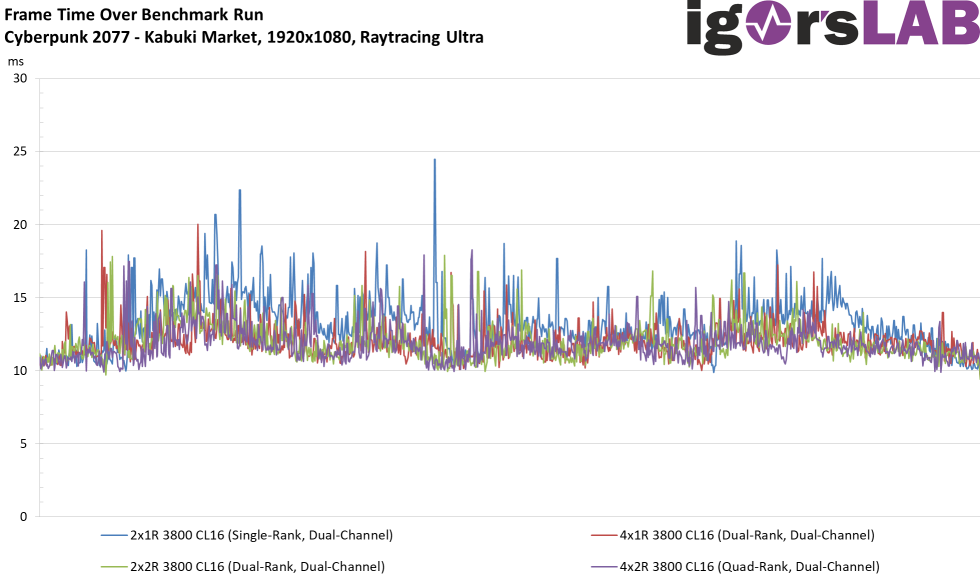
I’m also attaching a line diagram with the frame times over the course of the benchmark run here for completeness. You’ll see why at 1440p.
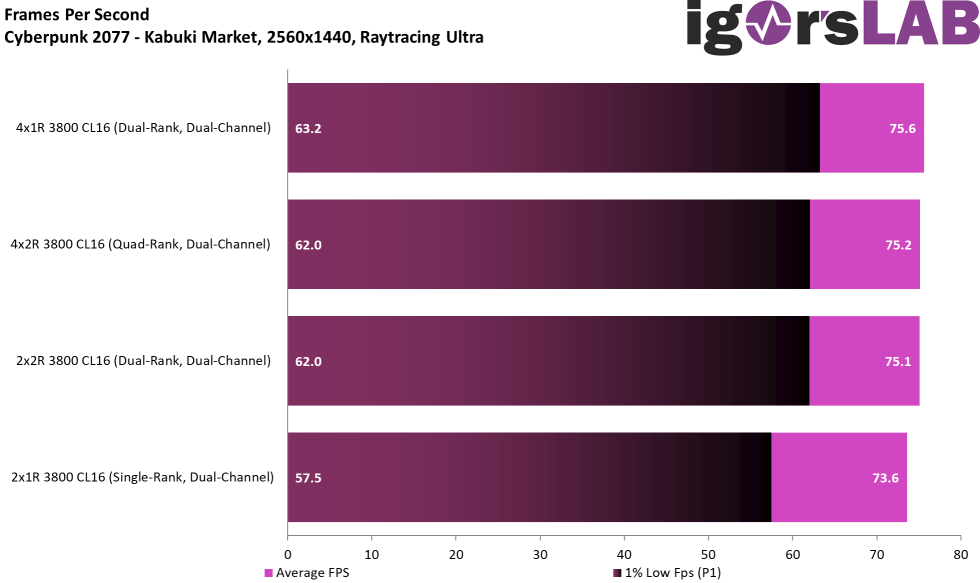
As expected, the gaps shrink in 1440p as we become increasingly limited by the GPU, but discernible and reproducible differences between the configs remain. The biggest gap here is again between single-ranked and dual-ranked. But again, it’s striking how nearly perfectly congruent the two dual-rank configs are.
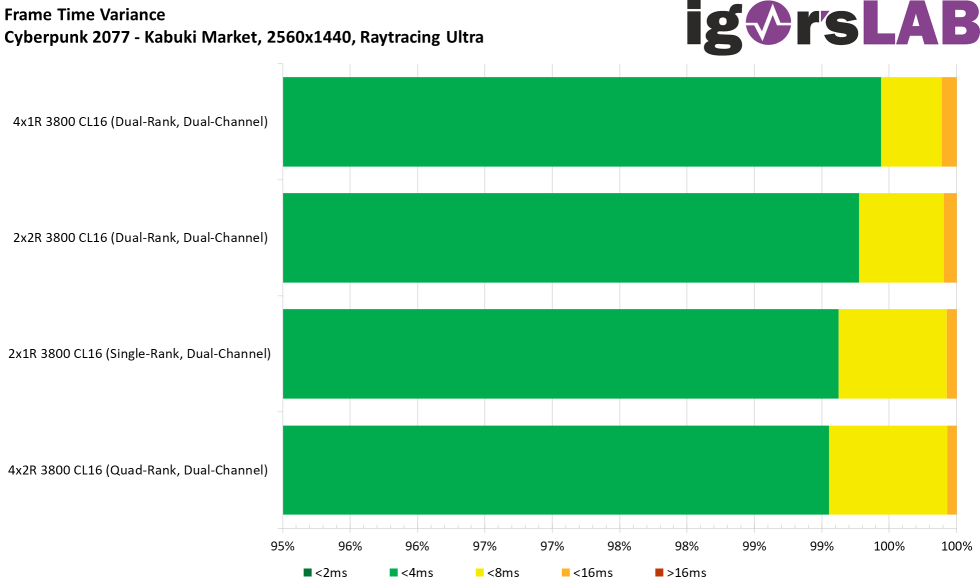
Interestingly, no reliable statements can be made about the frame time variances in 1440p with the conventional subdivision into 2 ms steps. Because even if supposedly quad-rank is suddenly the taillight here, the presentation is deceptive. For the sake of transparency, however, I have left the graph in, and to supplement it, here is a representation of the frame times as a line graph.
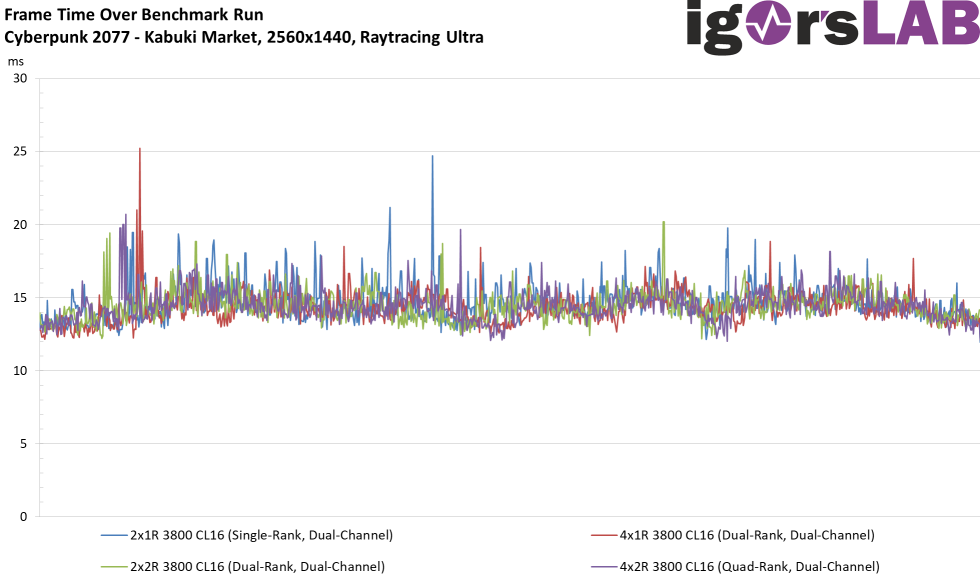
Here we can clearly see that the sinlge-rank Config has the most spikes upwards, while there are significantly fewer for both dual-rank configs and almost none at all for quad-rank. It is precisely these spikes that can spoil our gaming experience in the form of “stuttering”. As an aside, we have also seen here an example of how “good data” can be distorted with a “poor representation”.
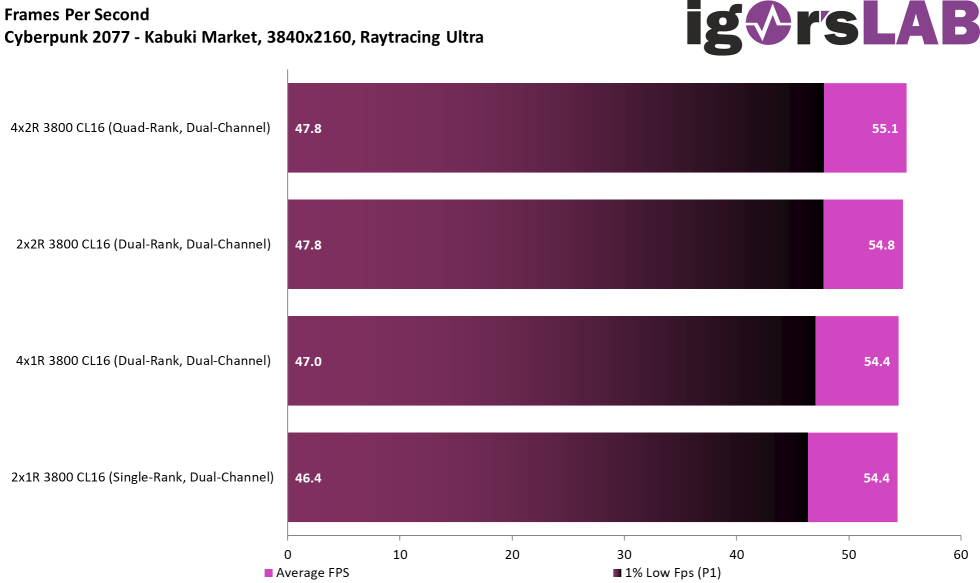
At UHD or 2160p, the differences have now become so vanishingly small due to the GPU bottleneck that you almost can’t measure them, let alone feel them while gaming. Still, quad-rank remains first, single-rank last, and dual-rank in the middle.

In the case of the frame time variances, the difference between sinlge-rank and dual-rank is again somewhat larger, which can again be authentically represented in 2 ms blocks. Single-rank has the biggest drops in frame times, while Quad-Rank is the most consistent.
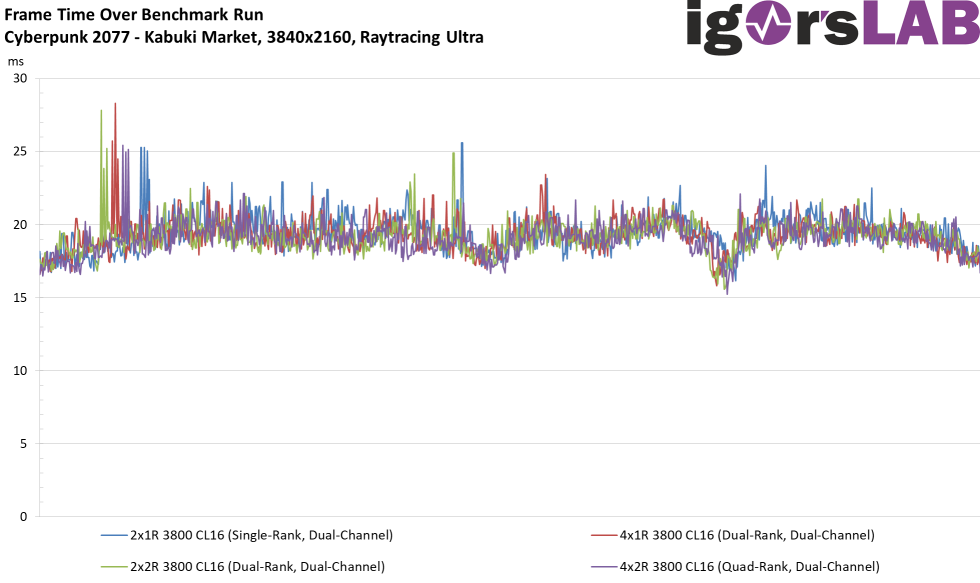
We can also see the differences well again when displaying the frame times over the time of the benchmark. Single-rank with the most peaks, quad-rank with the fewest, and dual-rank in between.
So different numbers of ranks will also be noticeable when gaming, provided it’s a title like Cyberpunk 2077, which is relatively CPU and RAM intensive. More ranks deliver more FPS at lower resolutions and more consistent frame times at higher resolutions, resulting in a “smoother” gaming experience. Also there is effectively no difference between the two dual-rank configurations. So, also for Cyberpunk, it does not matter over how many boards the RAM ranks connected to the CPU are distributed.


































Kommentieren